Kia Stonic vs Nissan Leaf – Which model is better for everyday use?
Everyday use, family trips or long-distance drives – here’s where the differences show.
Discover whether Kia Stonic or Nissan Leaf fits your lifestyle better.
Costs and Efficiency: When it comes to price and running costs, the biggest differences usually appear. This is often where you see which car fits your budget better in the long run.
Kia Stonic has a significantly advantage in terms of price – it starts at 19400 £, while the Nissan Leaf costs 30800 £. That’s a price difference of around 11323 £.
Engine and Performance: Power, torque and acceleration are the classic benchmarks for car enthusiasts – and here, some clear differences start to show.
When it comes to engine power, the Nissan Leaf has a convincingly edge – offering 217 HP compared to 100 HP. That’s roughly 117 HP more horsepower.
In acceleration from 0 to 100 km/h, the Nissan Leaf is convincingly quicker – completing the sprint in 6.90 s, while the Kia Stonic takes 11.30 s. That’s about 4.40 s faster.
In terms of top speed, the Kia Stonic performs slightly better – reaching 179 km/h, while the Nissan Leaf tops out at 157 km/h. The difference is around 22 km/h.
There’s also a difference in torque: Nissan Leaf pulls significantly stronger with 340 Nm compared to 200 Nm. That’s about 140 Nm difference.
Space and Everyday Use: Whether family car or daily driver – which one offers more room, flexibility and comfort?
Both vehicles offer seating for 5 people.
In curb weight, Kia Stonic is noticeable lighter – 1195 kg compared to 1580 kg. The difference is around 385 kg.
In terms of boot space, the Nissan Leaf offers slightly more room – 394 L compared to 352 L. That’s a difference of about 42 L.
In maximum load capacity, the Kia Stonic performs evident better – up to 1155 L, which is about 365 L more than the Nissan Leaf.
When it comes to payload, Kia Stonic barely noticeable takes the win – 455 kg compared to 415 kg. That’s a difference of about 40 kg.
Who wins the race?
The Nissan Leaf proves to be is largely superior and therefore becomes our DriveDuel Champion!
Nissan Leaf is the better all-rounder in this comparison.
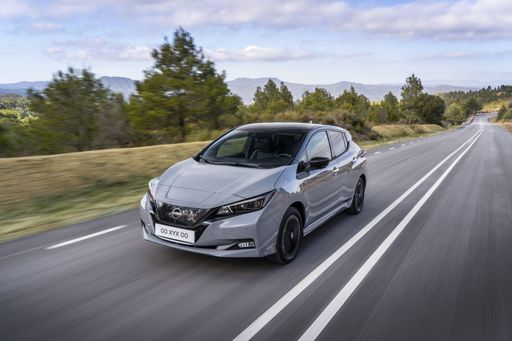
Nissan Leaf
Kia Stonic
The Kia Stonic is a compact crossover that seamlessly blends bold design with practical functionality. Its distinctive, eye-catching exterior is complemented by a well-crafted interior offering a comfortable ride and intuitive technology for today's drivers. The Stonic is perfect for urban environments, providing agility and efficiency without compromising on style or performance.
details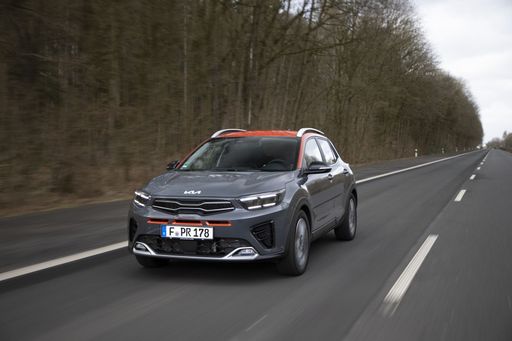 @ press.kia.com
@ press.kia.com
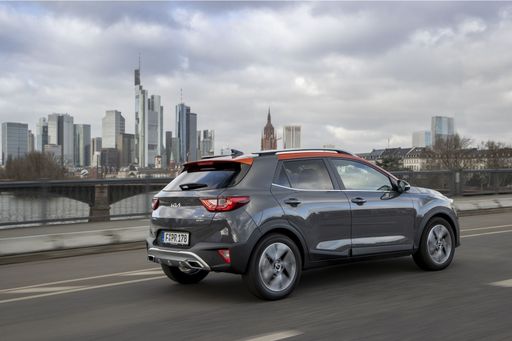 @ press.kia.com
@ press.kia.com
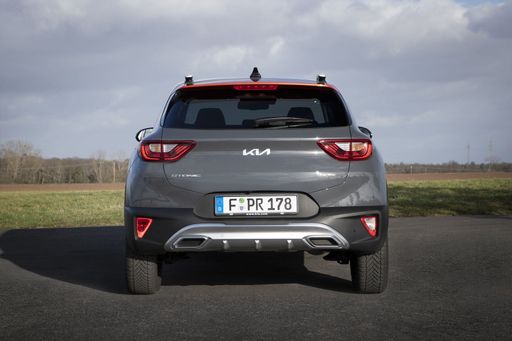 @ press.kia.com
@ press.kia.com
 @ press.kia.com
@ press.kia.com
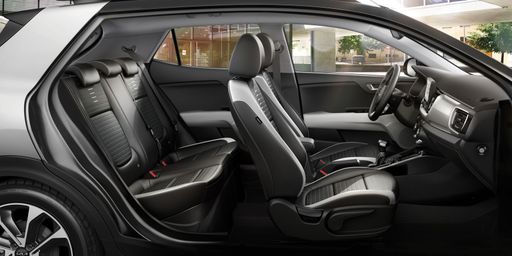 @ press.kia.com
@ press.kia.com
Nissan Leaf
The Nissan Leaf stands out as a pioneering model in the realm of electric vehicles, known for its impressive blend of practicality and eco-friendliness. It offers a smooth and quiet driving experience, making it an ideal choice for city commuting and longer journeys alike. The interior design is both comfortable and intuitive, providing drivers with a sense of modernity and ease of use.
details @ germany.nissannews.com
@ germany.nissannews.com
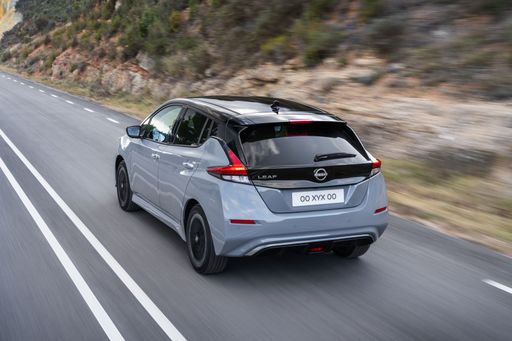 @ germany.nissannews.com
@ germany.nissannews.com
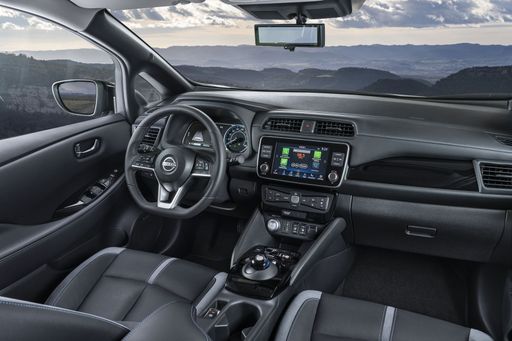 @ germany.nissannews.com
@ germany.nissannews.com
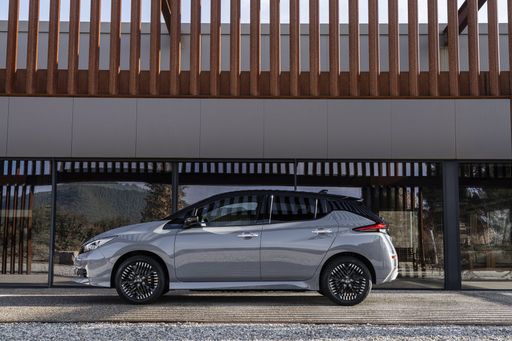 @ germany.nissannews.com
@ germany.nissannews.com

|

|
|
|
|
Costs and Consumption |
|
|---|---|
|
Price
19400 - 25600 £
|
Price
30800 - 37200 £
|
|
Consumption L/100km
5.5 - 5.7 L
|
Consumption L/100km
-
|
|
Consumption kWh/100km
-
|
Consumption kWh/100km
16.7 - 17.8 kWh
|
|
Electric Range
-
|
Electric Range
270 - 385 km
|
|
Battery Capacity
-
|
Battery Capacity
39 - 59 kWh
|
|
co2
125 - 129 g/km
|
co2
0 g/km
|
|
Fuel tank capacity
45 L
|
Fuel tank capacity
-
|
Dimensions and Body |
|
|---|---|
|
Body Type
SUV
|
Body Type
Hatchback
|
|
Seats
5
|
Seats
5
|
|
Doors
5
|
Doors
5
|
|
Curb weight
1195 - 1260 kg
|
Curb weight
1580 - 1756 kg
|
|
Trunk capacity
352 L
|
Trunk capacity
385 - 394 L
|
|
Length
4140 mm
|
Length
4490 mm
|
|
Width
1760 mm
|
Width
1788 mm
|
|
Height
1505 mm
|
Height
1540 - 1545 mm
|
|
Max trunk capacity
1155 L
|
Max trunk capacity
790 L
|
|
Payload
450 - 455 kg
|
Payload
384 - 415 kg
|
Engine and Performance |
|
|---|---|
|
Engine Type
Petrol, Petrol MHEV
|
Engine Type
Electric
|
|
Transmission
Manuel, Automatic
|
Transmission
Automatic
|
|
Transmission Detail
Manual Gearbox, Dual-Clutch Automatic
|
Transmission Detail
Reduction Gearbox
|
|
Drive Type
Front-Wheel Drive
|
Drive Type
Front-Wheel Drive
|
|
Power HP
100 HP
|
Power HP
150 - 217 HP
|
|
Acceleration 0-100km/h
11.3 - 12.4 s
|
Acceleration 0-100km/h
6.9 - 7.9 s
|
|
Max Speed
176 - 179 km/h
|
Max Speed
144 - 157 km/h
|
|
Torque
172 - 200 Nm
|
Torque
320 - 340 Nm
|
|
Number of Cylinders
3
|
Number of Cylinders
-
|
|
Power kW
74 kW
|
Power kW
110 - 160 kW
|
|
Engine capacity
998 cm3
|
Engine capacity
-
|
General |
|
|---|---|
|
Model Year
2024 - 2025
|
Model Year
2019
|
|
CO2 Efficiency Class
D
|
CO2 Efficiency Class
A
|
|
Brand
Kia
|
Brand
Nissan
|
Is the Kia Stonic offered with different drivetrains?
The Kia Stonic is offered with Front-Wheel Drive.
The prices and data displayed are estimates based on German list prices and may vary by country. This information is not legally binding.
